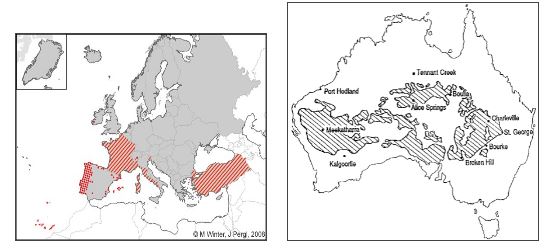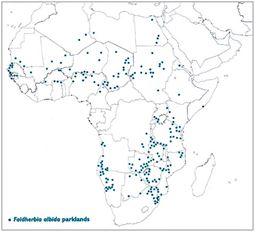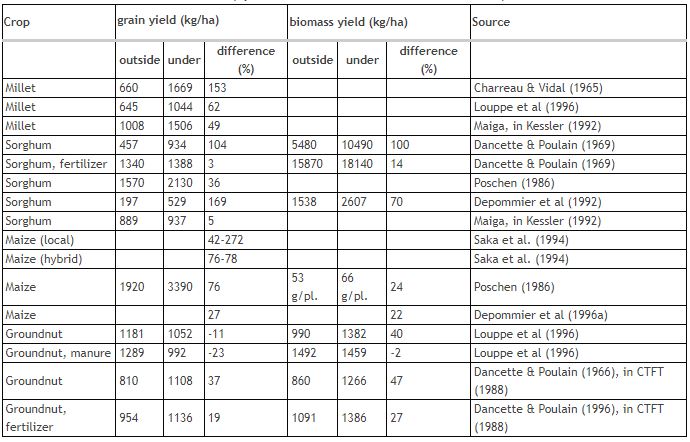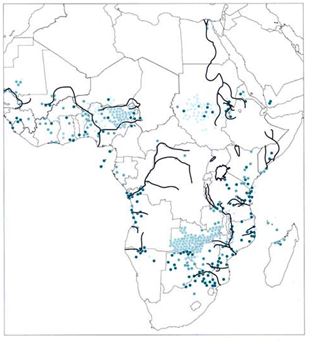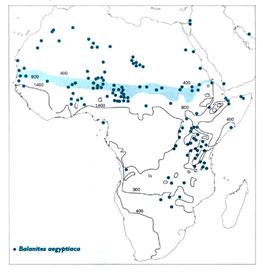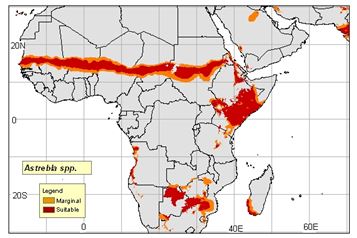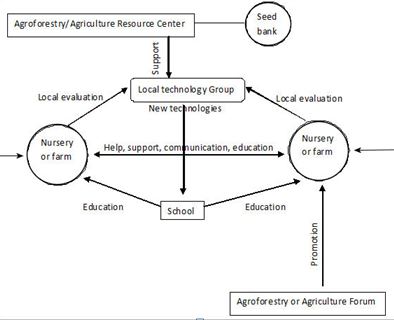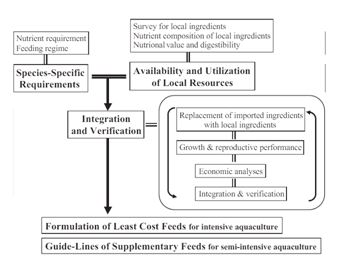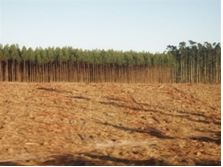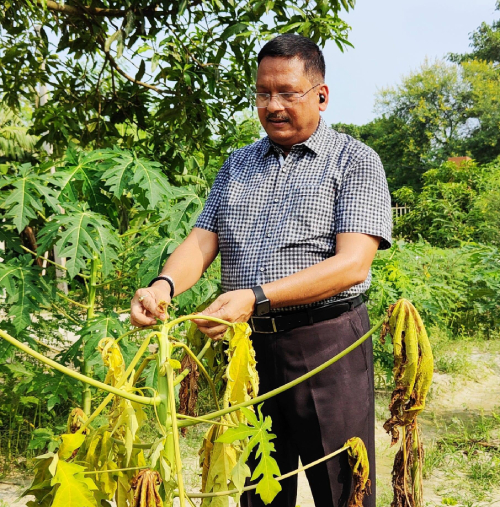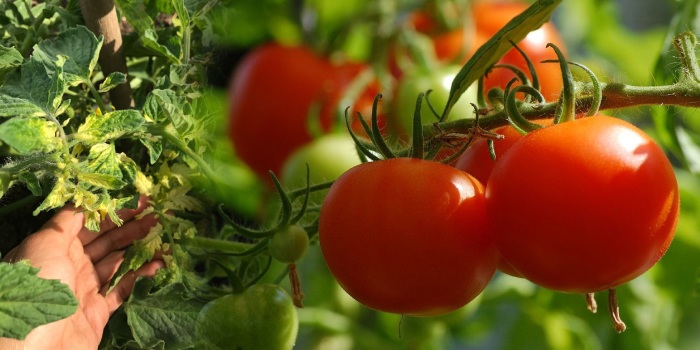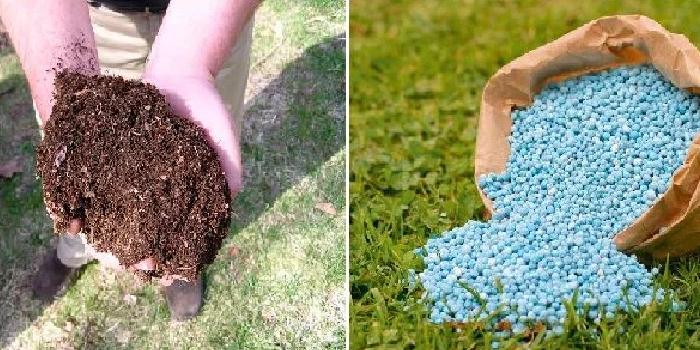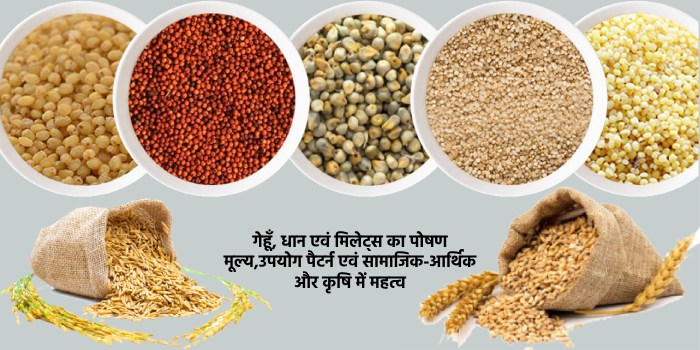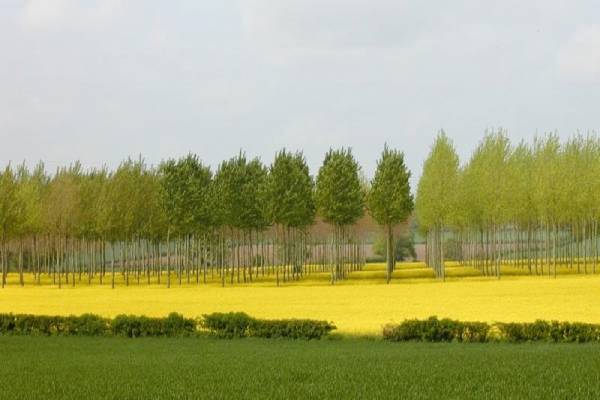
Introductions:
In order to improve food security, arid regions should establish desert agriculture and desert agroforestry as their mainstream agricultural technique. Such regions include Africa, the Middle East, and Australia.
Desert agriculture is the farming of crops well-suited for arid conditions, such as sorghum. Desert agroforestry is the growing of crops with the environmental support of trees in desert or arid areas.
By incorporating these two agricultural techniques, countries should expect two results. One is the increase in food in desert regions due to the successful growth of specific crops that are well-suited to the dry and hot environment. Other crops would require many more resources and much more maintenance in order to just survive in such a climate. The other is the prevention of desertification, which is defined by “Desertification” (2006) as the destruction of animal and plant life in arid areas due to human actions, by the active revegetation of arid lands.
Region-specific Agriculture
According to Markwei, Ndlovu, Robinson, and Shah (2010), “A broader perspective [to reducing hunger in Africa] encompasses an integrated agricultural commodity value chain from production through to processing and marketing with a local and regional perspective. It accounts for the multiple functions of agriculture that include the improvement of livelihoods, the enhancement of environmental services, the conservation of natural resources and biodiversity, and the contribution of agriculture to the maintenance of social and cultural traditions” (p. 7).
The proposed solution goes hand in hand with this quote.
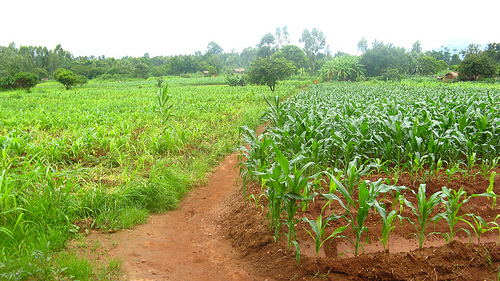
A comparison of corn grown with fertilizer (right) and corn grown without it (left) in Malawi. The fertilizer requires annual reapplication and is still pricey for farmers despite subsidization. Source: Duffell, 2007
Currently, several countries of arid climates support the growth of maize despite its need for water and irrigation. But as realized in Kenya, the increasingly arid land is unable to support maize crops (Mbogo, 2010). This proves that while maize is an internationally important grain, and is successfully grown in many areas, it is not the most suitable crop for Africa. By growing crops suitable for arid climates, not only will more water be available for other purposes, but less intensive and more sustainable and organic farming will be possible. Specific species, particularly those suitable for Africa, for not only agriculture but also agroforestry is described a bit later in the page.
Also, growing plants and crops in desert areas will help prevent desertification, which is a problem many countries are facing. According to “Desertification” (2006), one way to prevent desertification is by preventing soil erosion, which planting vegetation will do. Moreover, since plants native to arid climates will be planted, the plants will be low maintenance and will thrive, as proven by their natural existence in the climates today. (Mnzava, 1985)
Case Study: Africa
The following is a list of plant species that can play a vital role in the proposed solution for Africa, and other arid regions after taking cultural and environmental factors, as explained later, into account. Several are particularly attractive because of their ability to fix nitrogen, which is the process of putting nitrogen, a valuable element for plant growth, back into the soil. Putting nitrogen and other nutrients back into the soil provides food for growing vegetation and can potentially reverse desertification by reviving the soil (“Desertification,” 2006).
Dregne (1976) lists several plants that live in but are not limited to the arid regions if Africa (p.56). The list includes:
• Acacia
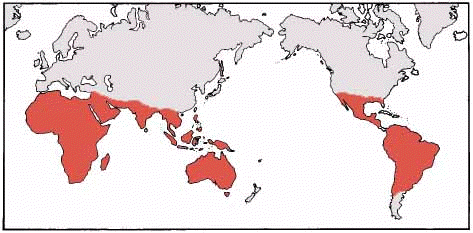
Figure 1. Distribution of acacia in terms of maps. Source: Australian National Botanic Gardens [ANBC], 2010
In addition to having medicinal uses, wood suitable for construction material and fuel, and edible products for humans and animals, widespread (as seen by the above figures) acacia trees provide environmental benefits too (World Agricultural Centre [ICRAF], 2009). It serves as a wind breaker and prevents soil erosion; but most importantly it is a great source of nitrogen (ICRAF, 2009).
(Left) Figure 2. Distribution of Acacia dealbata in Europe (as an alien species) Source: Marchante, 200
(Right) Figure 3. Distribution of acacia aneura in Australia. Source: Nix & Austin, 1973
In a study with Acacia dealbata, the trees, planted at 2500 stems per hectare (stems/ha) were able to generate about 50 kilograms of nitrogen per hectare (kg/ha)—40 kg/ha was in the soil, and 10kg/ha was in its vegetation in one year (May & Atwill, 2003). A part of the study was performed in a region that was slashed and burned, so nitrogen fixation was greater there because of the nutrient-rich ash (May & Atwill, 2003). However, it is not advisable to perform such agricultural techniques because it was calculated for the acacia trees to take 9 years to replenish the nitrogen that was lost (May & Atwill). What makes several, if not most species of acacia trees particularly interesting is “reverse leaf phenology” (Heimbuch, 2009). Reverse leaf phenology makes the tree shed its nitrogen-rich acacia leaves at the start of the rainy season, which creates high quality, nutrient-filled soil (Heimbuch, 2009). As recorded by Boffa, reverse leaf phenology and nitrogen fixation of Faidherbia albida (F.albida) acacia trees yield about a 30% to 150% increase in nitrogen content depending on the environment (Boffa, 1999).
Planting crops alongside the trees is also attractive because the leaves fall at the same time as when farmers plant seeds, which is at the beginning of the rainy season, and nitrogen and other nutrients are released when the growing crops need them most (Hines & Eckman). The crops and trees also do not compete for sunlight because the trees have shed their leaves, and F. albida trees also provide little competition for water resources, even when planted at 4 by 4 meters away from each other (Boffa, 1999). According to Roupsard, Ferhi, Granier, Pallo, Depommier, Mallet, Joly, and Dreyer (1999), the trees only use less than 5% of annual rainfall. In Malawi, growing maize alongside these trees increased yields by 280% (Heimbuch, 2009). The corn and trees do not compete for sunlight because the corn grows when the leaves of the acacia tree are gone, and the leaves fall coincidentally at the same time as when farmers plant their seeds (Heimbuch, 2009). Yields for other crops grown with F. albida trees are shown on this table (Boffa, 1999).
Table 1. Improvement (%) of soil nutrient content under Faidherbia albida canopies compared to controls
Source: Boffa, 1999, Biophysical Factors in Parkland Management: Parkland tree species
Note that key to reverse leaf phenology is letting the acacia trees grow naturally, which includes not pruning them (Boffa, 1999).
As cited by Heimbuch (2009), Dennis Garrity, Director General of the World Agroforestry Centre, says, “Growing the right tree in the right place on farms in sub-Saharan Africa-and worldwide- has the potential to slow climate change, feed more people, and protect the environment. This tree, as a source of free, organic nitrogen, is an example of that. There are many other examples of solutions to African farming that exist here already.”
Figure 4. Map of distribution of Faidherbia albida in Africa. Source: Boffa, 1999, Agroforestry Parkland Systems
Table 2. Crop yields under and outside Faidherbia albida canopies
Source: Boffa, 1999, Biophysical Factors in Parkland Management: Influence of trees on mineral content of understoery plants
While most scientists are attracted to F. albida in sub-Saharan Africa, the same idea is applicable in many other areas with other types of acacia. For example, one study, performed in Blue Nile Sudan, showed that Acacia senegal under different climates perform similarly in terms of nitrogen fixing, and that in turn increases with the age of the tree (Raddad, Salih, Fadl, Kaarakka & Luukkanen, 2005). And within the research mentioned up to this point, three different species have been evaluated, and all had nitrogen fixing properties. Boffa (1999) agrees, saying, “Nutrient enrichment under other parkland trees may be less remarkable than for F. albida but is also common” (Parkland Tree Species).
Such a project to integrate acacias into agriculture already exists. The Maradi Integrated Development Project (MIDP), having successfully developed sustainable agriculture for twenty years, encourages Niger to use agroforestry (with Australian acacias) as a sustainable farming technique (“Austrailian Acacias,” 2008).
• Adansonia
Figure 5. Distribution of A. digitata. Varying dot shades are from different sources, documented on the original website. Notice the dots in Yemen. Source: Boffa, 1999, Agroforestry Parkland Systems: Other important parkland species
While Adansonia, commonly known as baobabs, do not necessarily have nitrogen fixing properties, African natives are able to utilize almost every part of the tree for food or other commodities (Mnzava, 1985). Most species exist in Madagascar, but the Adansoniadigitata grows throughout Africa, even though it is only indigenous to the southern area, because it was spread by natives (Le Jardin Naturel, n.d.). Baobabs are able to survive in several areas, particularly arid regions because their massive trunks store a significant amount of water (“Adansonaia,” n.d.). A. digitata even appears to be a halophyte, since it has been seen growing in salt plains (Oxford, n.d.).
• Balanites
Figure 6. Distribution of Balanites aegyptiaca. Source: Boffa, 1999, Agroforestry Parkland Systems: Other Important Parkland Species
Balaniteaegyptica, native to Africa and Middle East, is another species native to Africa that fixes nitrogen (Hines & Eckman, 1993). It also has many uses for feed and fuel, and is an edible, but bitter, vegetable (ICRAF, n.d.c).
• Capparis
Several Capparis species, including C. decidua and C. tomentosa, provide a source of fruit and fodder (ICRAF, n.d.b; ICRAF, n.d.c)
• Sorghum
Sorghum is particularly important for Africa because it is one of the most drought-tolerant grain crops currently being cultivated (U.S. Grain council, 2010). But, sorghum is also able to grow in temperate or tropical regions, in salty or waterlogged soil (NAS, 1996, p. 127). As one of the most efficient plants photosynthetically, sorghum provides the most calories per unit of mechanical energy spent. Internationally, sorghum is already is an important grain that is rich in antioxidants and is gluten-free, and is most likely going to become even more important in the coming years (U.S. Grain Council, 2010). Not only can sorghum be consumed, but it can also be used for forage, construction materials, agricultural purposes, and commercial products (NAS, 1996, p. 128).
• Eragrostis
Eragrostis tefis a high quality, drought resistant grain, grown mostly in Ethiopia despite being suitable for many other arid regions and being able to grow under yearly variable conditions (National Academy of Sciences [NAS], 1996, p.218). As shown by Ethiopia’s 0.9 million tons of grain grown, or a fourth of the country’s cereal production, the crop is quite successful (NAS, 1996, p.215) However, growing E. tef requires hard labor; agricultural techniques are not well developed and thus far requires complicated cultural practices (NAS, 1996, p. 218).
Many other species of trees and plants might not provide food, but can be valuable in other respects, such as for medicinal purposes, fodder, and materials that can be used to make other commercial commodities.
This list of particular species that can be used in desert agriculture or desert agroforestry does not only pertain to Africa. For example, Australia and Africa have very similar climates and share similar vegetation--Australia has its own native acacias and baobab, and as mentioned above, some of Australia’s acacias are being used to help Africa (“Austrailian Acacis,” 2008; 20). Astrebla, a drought tolerant grass and important source of feed during dry seasons, is another example, as it is native to Australia, but also suitable for Africa’s climate (Cook et al, 2005).
Figure 7. This map shows where Astrebla spp. is suitable in Africa. Source: Cook et al, 2005
Implementation
Implementation will come from two directions. One direction starts with convincing participating governments that using region-specific crops for agriculture and incorporating agroforestry will be economically advantageous for the largest number of people. The key is that the plants grown will be agriculturally important and feed people, unlike the plants foresters in Senegal introduced, like the non-native eucalyptus and pine trees, which can only be used as firewood and support no other life (Mnzava, 1985). Eucalyptus trees in particular grow extremely fast, making it advantageous for foresters to grow, but they provide nothing for people other than foresters and their livestock (Mnzava, 1985). To counter situations like this, education of and agreements by the governments and their people, in addition to economic motivation and political coercion, is required in order for regions to implement changes to their agriculture.
The government in turn should provide seeds for the native plants, and make it economically advantageous to use native plants as crops.
Farmers who need to change crops will also have to be convinced that the new crops will be profitable due to the fact that they can handle arid conditions better. They will have to phase out their old crops and begin planting the new ones, eventually to produce as much or more than what they originally were. Researchers, teachers, and farmers will need to work together in order to develop and implement the most optimal sustainable methods of growing crops.
The other direction starts at the villages rather than through the government. Often times, more rural communities better understand their own needs and their region’s ecosystem because they rely heavily on it. For example, in Senegal, farmers do not cut down baobab trees because they understand its importance in their lives (Mnzava, 1985). They also appreciate nitrogen fixing trees, despite not knowing anything about nitrogen fixation (Mnzava, 1985). By directly giving villagers seeds for their native trees, reforestation would be much more successful, and the villagers would have more sources of food.
According to the International Development Research Centre (IDRC) (1998), a workshop on agroforestry was held at Kenya in 1995 to try to come up with a collaborative model for it. Farmers suggested that the beginnings of agroforestry start as several group nurseries, which could communicate with each other for help, support, and education (IDRC, 1998). The farmers knew that they would need more training and education in order to run the nurseries (IDRC, 1998). Everyone who attended the workshop agreed that there needed to be an “agroforestry forum” that would promote agroforestry techniques, an “agroforestry resource center” to support agroforestry development efforts, which would include native farmer groups, and a tree-seed bank in each district to facilitate agroforestry development (IDRC, 1998).
As a branch off of what the farmers suggested, a “local technology group” will also be developed. The purpose of this group is for farmers and local researchers to develop and provide simple, efficient technologies and techniques that would improve farming efficiencies and production (Gurnitz, 2010). Such techniques could be the optimal spacing of trees that should be used derived by researchers, or the planting of trees in pits to help revive degraded soils as discovered by farmers (Farm Radio International, 2003). The local technology group will disseminate the helpful information and considerably improve crop production.
Figure 8. Diagram of suggested organization of groups to implement desert agroforestry and agriculture in villages, adapted from the ideas resulting from the workshop in Kenya in 1998.
There also currently are several projects between banks and non-profit organizations to support farmers. One project, supported by Africa Harvest and Equity Bank, will help 10,000 Kenyan farmers switch from growing corn to growing sorghum (Mbogo, 2010). Equity Bank offers low interest loans for farmers to buy seed and other farming necessities, and Africa Harvest ensures quality yields by offering technical support (Mbogo, 2010). Other projects, like the Coca Cola Project, are investing in 50,000 Kenyan and Ugandan small farmers for their crop yields (Mbogo, 2010).
Similar programs focusing more on the spread of desert agroforestry and desert agriculture will help implement the solution to feed people in arid countries.
Similarly, we can look at model of desert aquaculture in Egypt, and possibly in other arid regions in Africa.
In the same fashion, we can propose the following method to develop feeds and feeding technologies.
The Limits of Region-Specific Agriculture and Agroforestry
This plan primarily targets regions that suffer from extremely arid, arid, or semi-arid conditions. These regions would be defined by the Thornthwaite moisture index that depends not only on precipitation, but other conditions such as topographical distance from a water source (Dregne, 1976, p.5, 7).
However, the planting of these species should not infringe on other ecosystems that exist with minimal human interaction. For example, savannahs should remain savannahs and support their ecosystems. Where people already are farming, and where civilizations already exist, are suitable places for planting more trees.
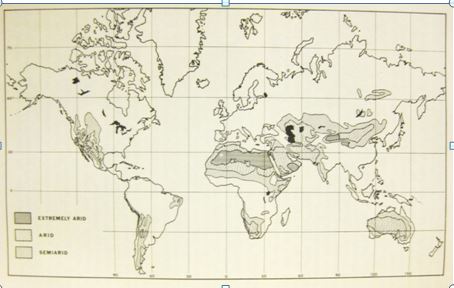
Figure 8. A map of arid regions in the world. Source: modified from Meigs, 1953, by Dregne, 1976, p.6
This plan of implementing agroforestry and more suitable crops for agriculture can also be extended to any place undergoing desertification or soil degradation. However, only certain species should be planted, depending on the region they are being planted in. Most native plants are suitable, while the effects of introduced species need to be analyzed beforehand, or evaluated in a small area where it will not do too much damage. The plants grown should not be high maintenance or require many resources. Instead, they should provide nutrients for the soil, particularly nitrogen, and provide food. At best, they would support biodiversity, fix nitrogen, and provide food.
Economics and Funding
Governments will have an incentive to fund new agriculture and agroforestry since it will increase agricultural production and reduce hunger. The international market for several African crops, like tef, is increasing, too (NAS, 1996, p.217). Aid will come from charities, volunteer groups, and concerned organizations (for instance, the Rockefeller Foundation).
Some organizations we would work with include the aforementioned Rockefeller Foundation, the US Agency for International Development, Winrock International, and the Partnership to Cut Hunger and Poverty in Africa are possible organizations who will help implement this plan. Implementing agroforestry, especially with acacia trees, is supported by the World Agroforestry Center (Heimbuch, 2009). Many other organizations and smaller volunteer groups would be willing to work with the implementation of the plan by helping plant trees or other vegetation, since the work would be a direct help to the environment with tangible results.
Overall, the implementation of this project should not be unreasonably expensive, especially if funded by large corporations, as some were in Kenya (Mbogo, 2010). In models where the government or non-profit organizations provide free distribution of seeds, some cost must be anticipated for providing seeds, providing education of optimal agricultural techniques, and starting groups or foundations dedicated to desert agriculture and agroforestry. On the bright side, particularly since native plants are being introduced, many seeds should already be available to the people and fairly inexpensive. Also, many countries already practice seed distribution. Unfortunately, in some cases, like in Tanzania, according to Mnzava (1985), some villagers are given seeds for trees that are not helpful in producing food for them or their animals. So, if they were actually given seeds for desert agriculture, the villagers’ situation would have food to eat and to sell.
A eucalyptus forest, which has clearly been planted. While this particular forest might not have been a result of government seed distribution to the villagers, there is a large amount of seeds being bought and planted. Also note how it is a barren forest. Source: Lang, 2004b
In Peshawar, Pakistan, the government gave 1450 farmers a 50kg bag of wheat seeds, a 50kg bag of fertilizer, and a 50kg bag of assorted vegetable seed, funded by the European Union to help them recover from the recent flood that destroyed their crops (“Government distributes,” 2010; “EU Firm,” 2010). If similar numbers were used for this project, each farmer will receive a bag of roughly 100kg of an assortment of seeds, depending on what they are planning to grow and the mass of each seed. They will need only minimal amounts of fertilizer, if any, because the plants they should be growing are well suited to the current soil and climate. We can project that a 100kg bag of seeds will cost about $100 per farmer. The cost of one kilogram of acacia seeds is 40 US cents (“Australian Acacias,” 2003). Moreover, acacia seeds are easy to harvest, nutritious (“Australian Acacias”, 2003). One report states that the seeds are produced at about 10kg per tree (Harwood, Rinaudo, & Adewusi, 1999).
However, scientific research to better understand the impact of a species in a region, and scientific research in the proposed agricultural technology groups to develop and implement better agricultural techniques will require monetary funding.
Timescale
Developing agroforestry and agriculture will take about 1 to 5 years to start for each region, but will develop infinitely. The implementation time depends on the education of the farmers and government, the development of groups to promote, develop, and help out with desert agriculture and agroforestry, and the amount of time it will take to phase out old crops and grow trees. After implementation, research will continue to evaluate which plant species should be used in each region’s agroforestry and agriculture and develop more efficient and sustainable agricultural techniques. Long term effects, including a better environment overall, most certainly will appear.
Unresolved Issues
While analyzing the traits of certain plants is relatively straight forward, deciding which vegetation should be used to implement desert agriculture and agroforestry and which vegetation should not be is much more difficult.
Some native plants might be more harmful than beneficial to an ecosystem. For example, tamarix trees of North Africa seem detrimental to the environment, since they are salty, water draining trees. However, tamarix are native African trees but only do not compete for water resources with acacia trees because they are distributed so far away from each other (Sher, Wiegand, Ward). In the Americas, tamarix are known weeds that can thrive in a wide range of areas and drain a lot of water (“Non-native”, n.d.). A decision about invasive, though perhaps native plant species needs to be made. A one by one analysis on each species is needed, because, despite being generalized under the same category, each species is different.
Whether or not to introduce non-native crops is also under debate. As mentioned above, several grains easily found in Africa could be introduced to the Middle East or Australia, or vice versa. But the effects the introduced grains will have on the ecosystems there are unknown. One seemingly positive example is given by “Australian acacias” (2008), where Australian acacias are incorporated into Kenyan crops.
However, an example of a debatably negative exotic crop in Africa is the introduced eucalyptus tree. Current research shows that eucalyptus trees, commonly known as “water guzzler,” use up a lot of water when planted near water beds, and can severely drain the water table (Okella, 2009; Lang, 2004). In terms of biodiversity, eucalyptus trees support none (Okella, 2009). In the past, when non-native trees overtook the indigenous specious, several crops failed because of the lowered water resources, and ruined food security (Lang, 2004).
In the background, there are mesquite bushes growing in the sand dunes, which shows that they could probably survive in the Sahara desert's climate too. However, the environmental impact of introducing mesquite must be evaluated first. Source: Vijayarajan, 2008
From another perspective, eucalyptus trees grow quickly, so they are a good source of wood for foresters, and are extremely helpful in sequestering carbon dioxide (Holman, 2006). Moreover, only one hectare of trees is planted for every ten cut down, so planting fast-growing trees tackles this issue (Okella, 2009). Also, according to Dregne (1976), eucalyptus trees are able to grow on the edges of the Sahara desert (p. 56). In this case, eucalyptus trees do not seem to be water guzzlers, and can be helpful with controlling desertification.
So, as suggested by several supporters of eucalyptus trees, exotic species, even edible desert plants like mesquite, should also be investigated one by one (Okella, 2009). Those that do not devour water sources might be helpful in preventing further desertification, if implemented and planted along the regions becoming uninhabitable by every other plant.
It is also important not to forget the culture of the farmers' and their countries. The seeds and plants provided to the farmers need to match up with the people's lifestyles. If the Masai people survive off their livestock, and need vegetation that would be able to serve as fodder, then they need seeds that will provide them that (Mnzava, 1985).



